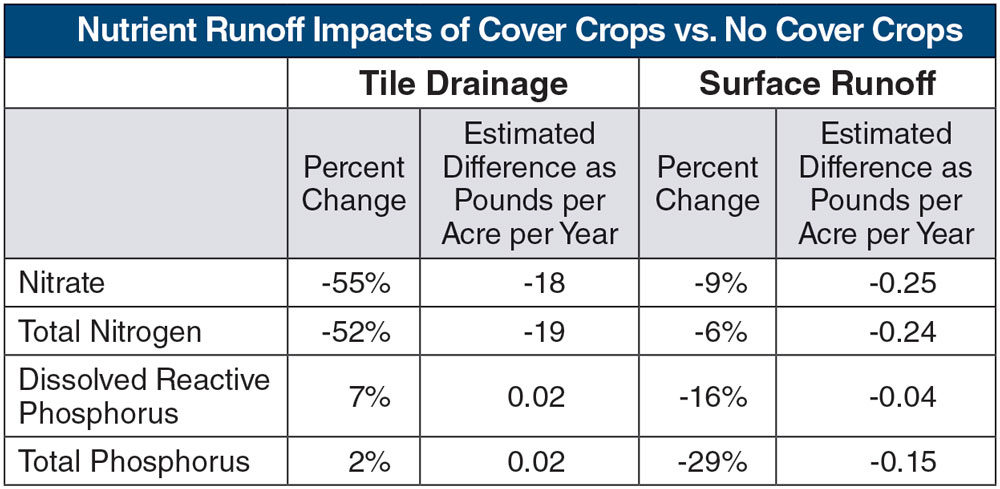No-Till Farmer
Get full access NOW to the most comprehensive, powerful and easy-to-use online resource for no-tillage practices. Just one good idea will pay for your subscription hundreds of times over.

COVER CROPS are having a moment and have been widely praised for their ability to combat soil erosion, suppress weeds, increase organic matter, cycle nutrients and more.
But a recent study in Ohio that looked at whether cover crops could help reduce nutrient loss to waterways revealed a mixed picture, according to Brittany Hanrahan, a research scientist at the USDA ARS Soil Drainage Research Unit in Columbus.
Agricultural lands have been identified as a primary source of nutrients in waterways that cause algal blooms and water quality degradation. This is due to the system being ‘inherently leaky,’ a problem Hanrahan discussed at the virtual 2021 Conservation Tillage and Technology Conference.
In an annual cropping system, the growing season is short — just 4-5 months — and the majority of nutrient loss occurs when the soil is bare, “from January to June, when snowmelt and seasonal precipitation increase the amount of water moving through the system.”
Cover crops, theoretically, can help reduce this loss by covering the soil and taking up nutrients during these times.
In a study including data from an 8-year period from October 2011 to September 2019, Hanrahan analyzed the average effect of cover crops across 40 sampling sites in Ohio that included both subsurface tile drainage and surface runoff outlets. Some farms had…